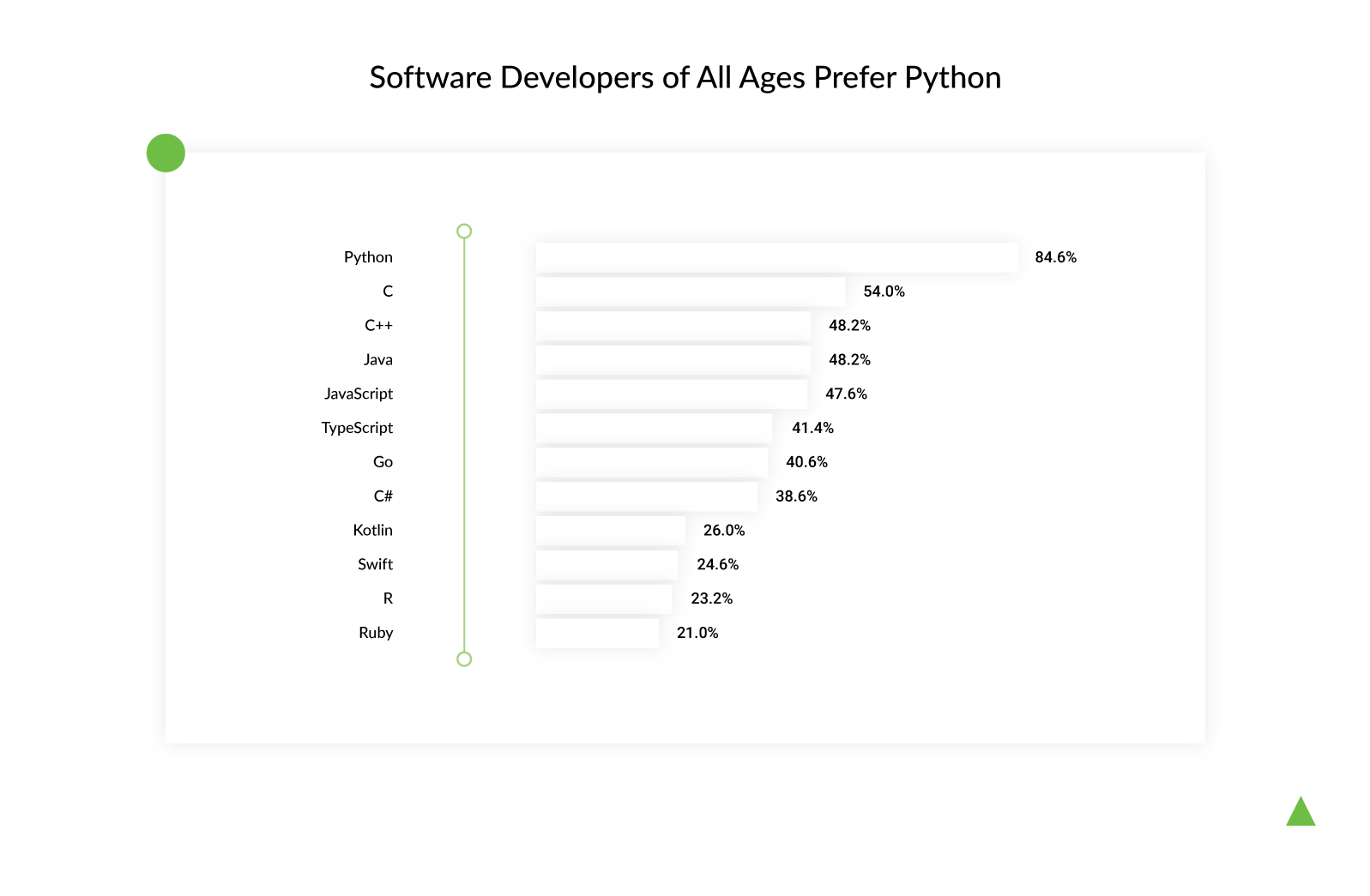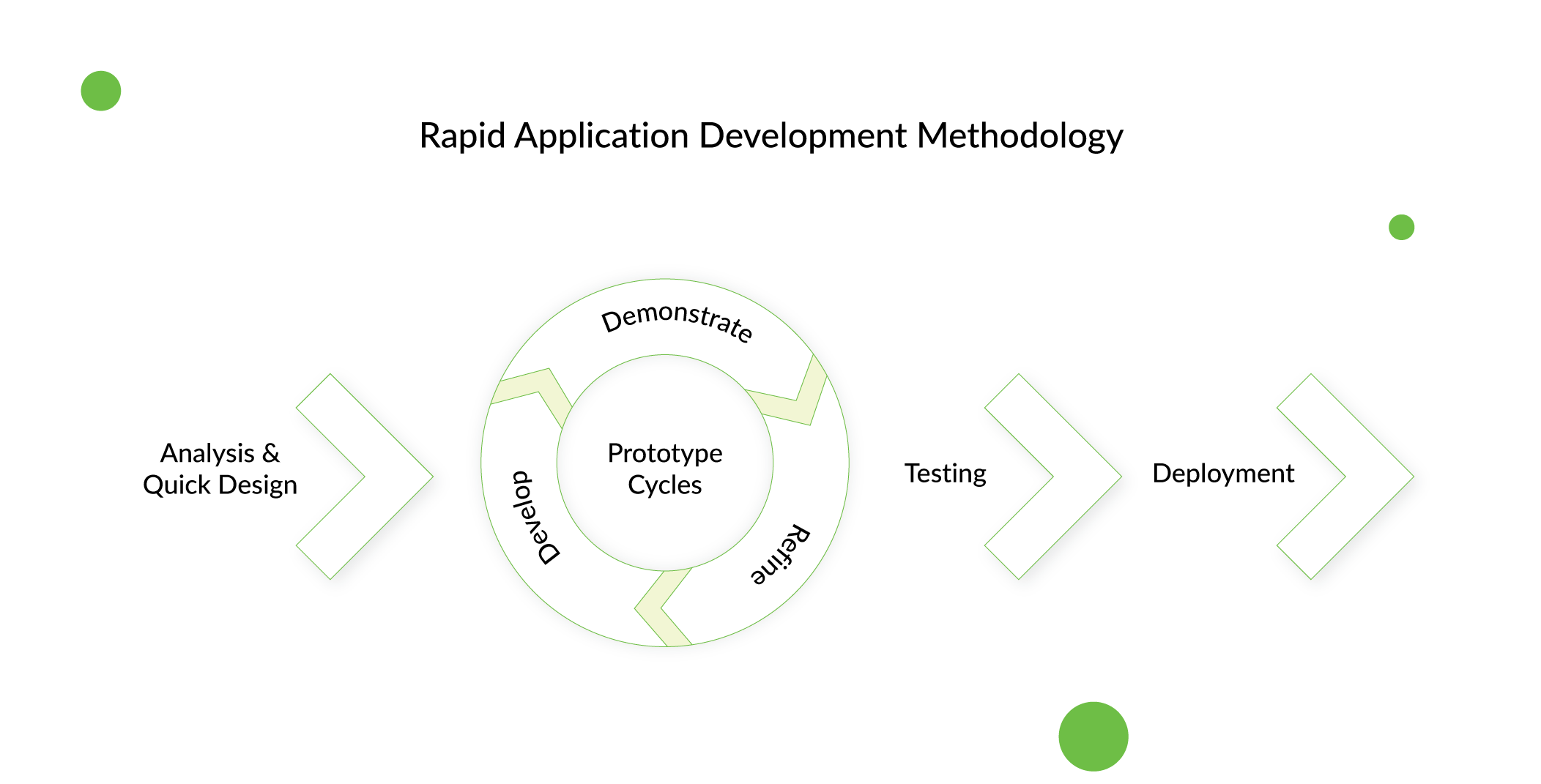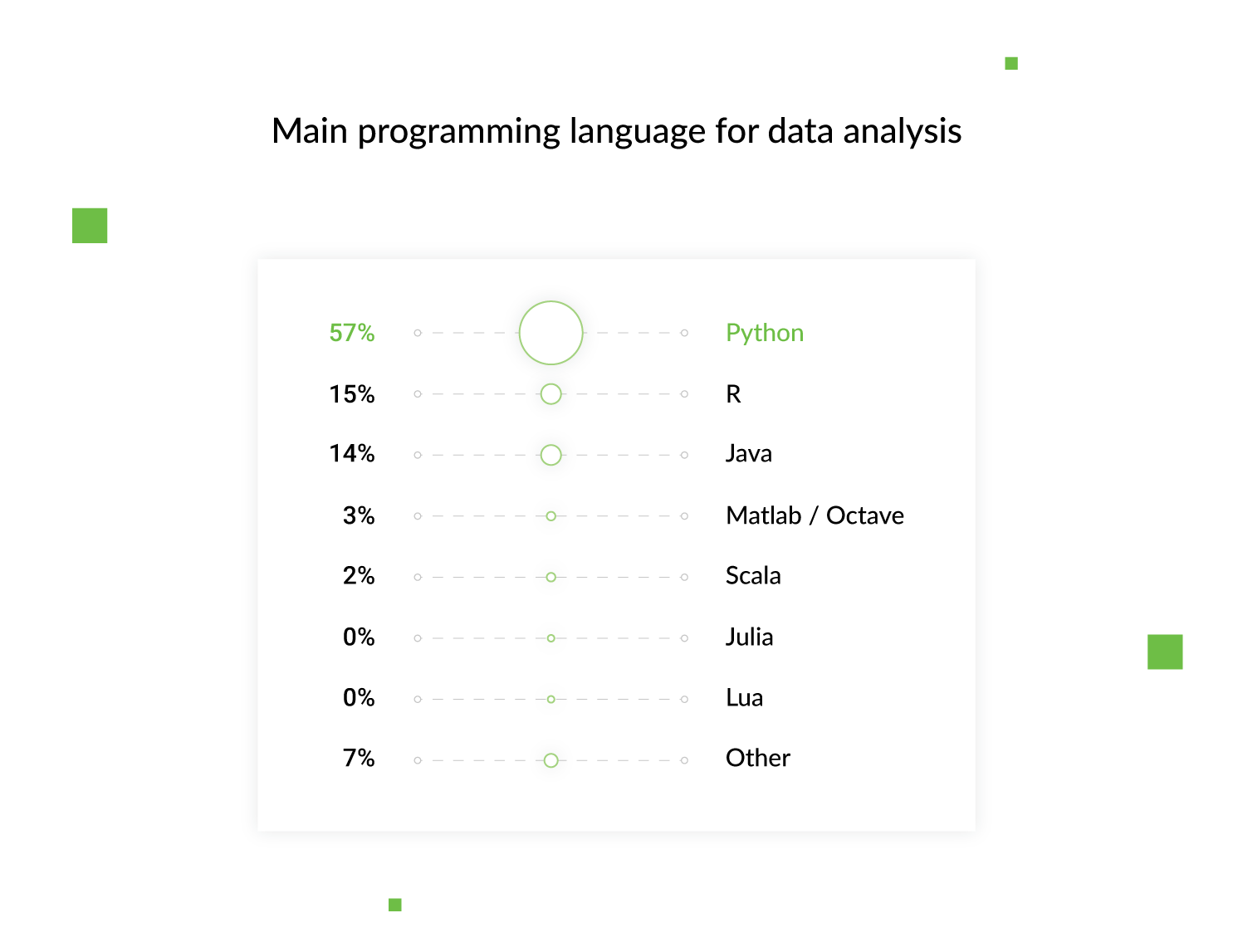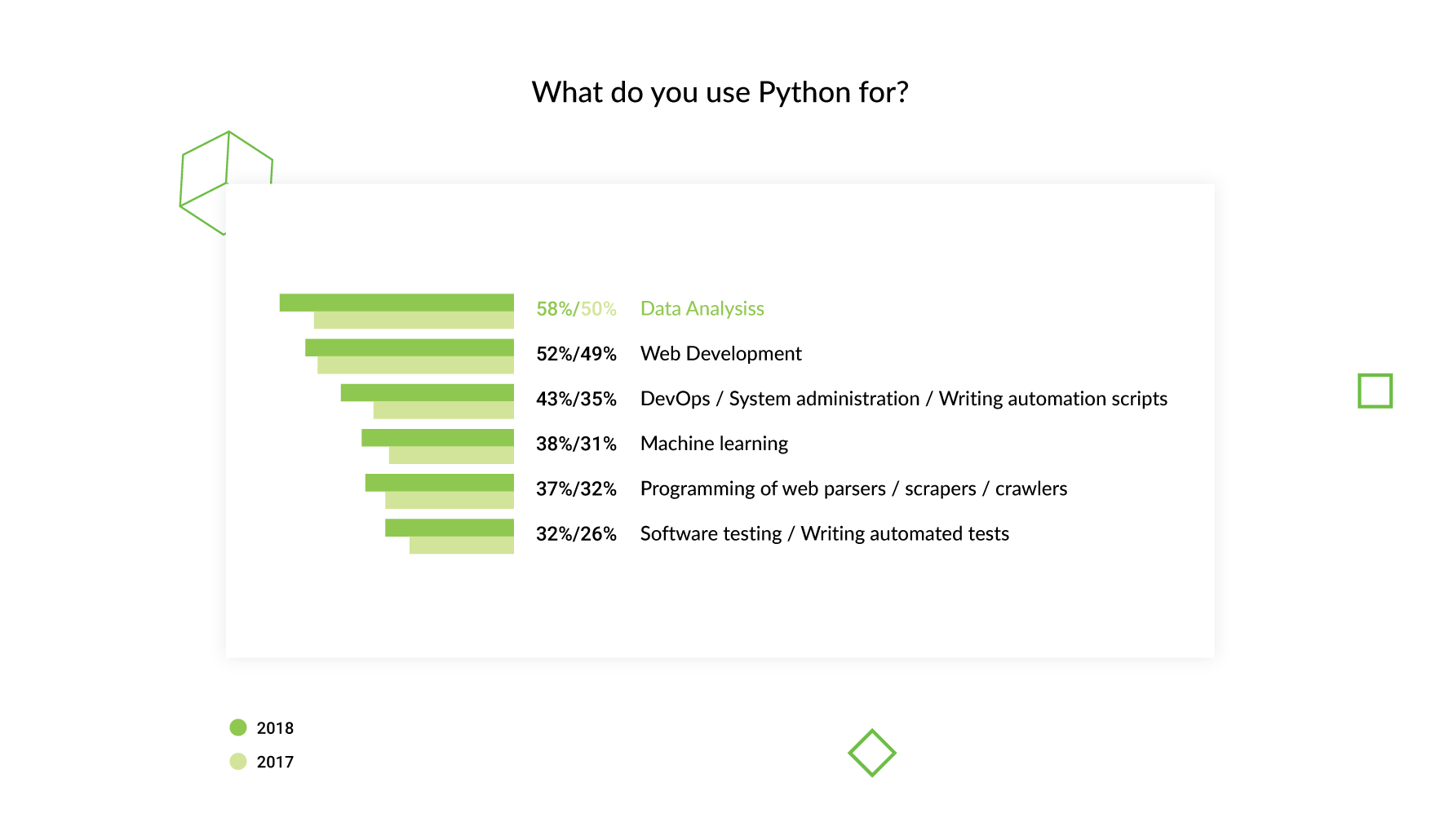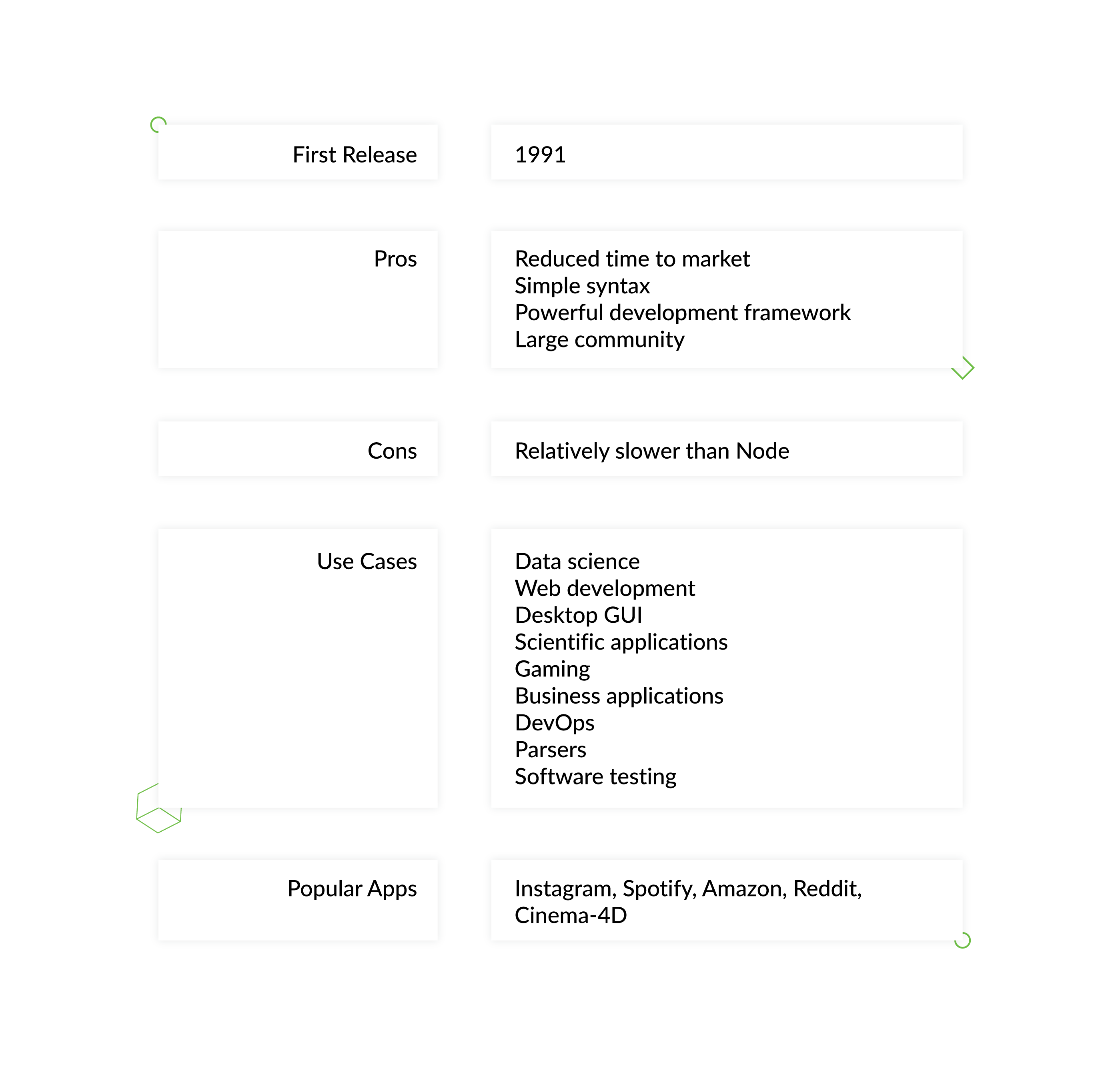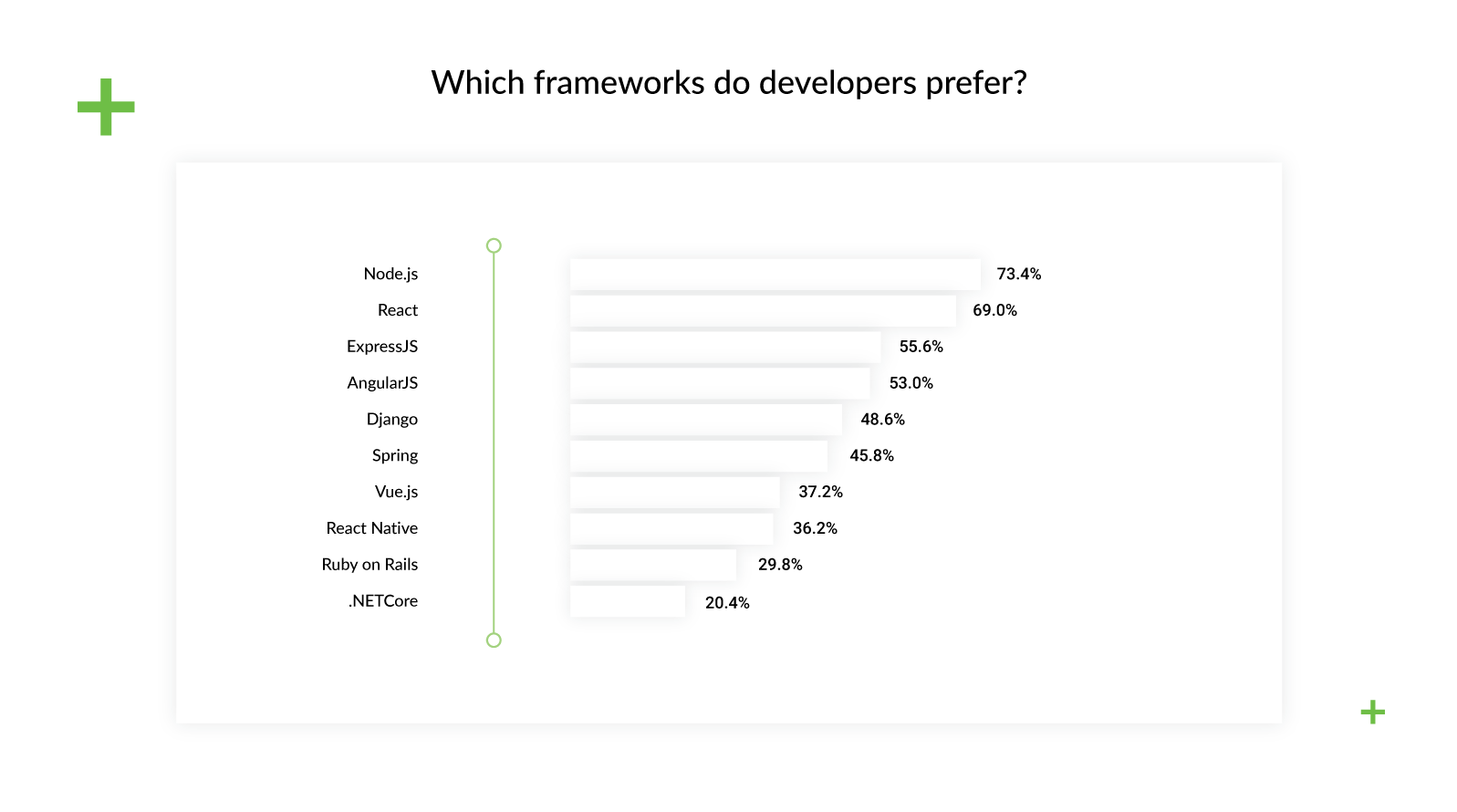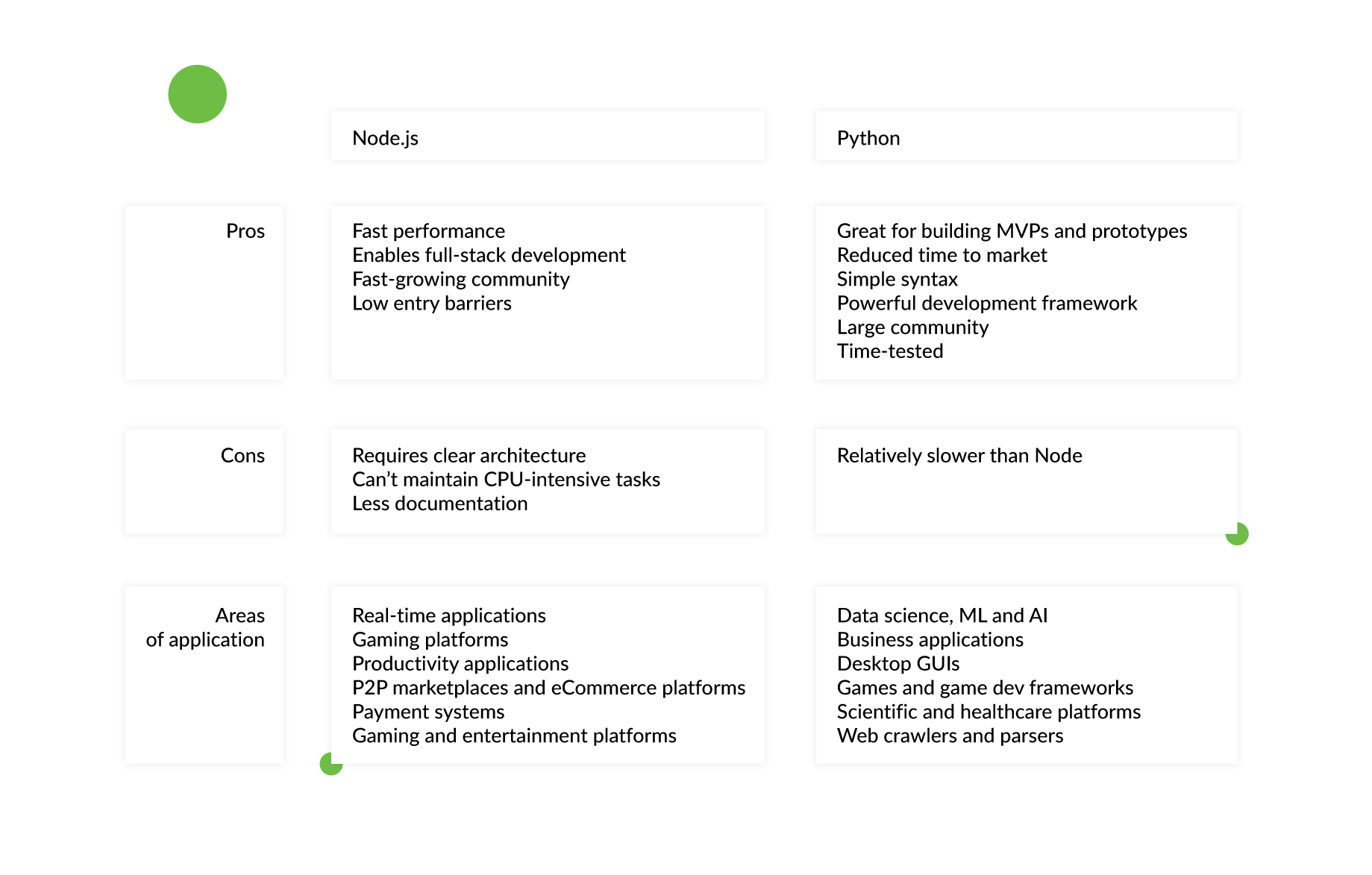Python or Node.Js: Which Is Better for Your Project?

Every project has its specifications and demands. And when you’re building an application, it’s most important to choose the right technology to code it.
In this article, we’ll look at Python vs. Node.js to learn about their benefits, downsides, and use cases so you can make an educated decision about which one is best suited to your project.
In addition, our expertise sets us apart in the ongoing debate between Python and Node.js. Understanding these intricacies allows us to deliver superior solutions. For your next project, consider our seasoned programmers for hire to improve Python performance.
Python vs. Node.js: Comparison Table
We’re excited to share our Python vs. Node.js comparison table, helping you make informed choices for your projects. Please note that the choice between Python and Node.js depends on specific project requirements and team expertise.
| Criteria | Python | Node.js |
|---|---|---|
| Performance | Generally slower due to interpreted nature. | Highly performant, thanks to V8 engine. |
| Syntax | Clear and readable syntax, suitable for beginners. | JavaScript syntax, can be complex for novices. |
| Concurrency | Supports multi-threading and asynchronous programming. | Primarily asynchronous, single-threaded event loop. |
| Ecosystem | Rich libraries and frameworks for various applications. | Large npm registry with numerous packages. |
| Community | Active global community, vast resources for learning. | Large and active community, strong support. |
| Learning Curve | Relatively easier learning curve, especially for beginners. | Steeper learning curve, especially for asynchronous programming. |
| Use Cases | Versatile, used in web development, data analysis, AI, etc. | Ideal for real-time applications, microservices, and scalable server-side applications. |
| Scalability | Scales well for various applications and project sizes. | Excellent scalability for handling numerous concurrent connections. |
| Popularity | Widely adopted, popular for its simplicity and readability. | Widely used, especially for building scalable network applications. |
| Error Handling | Strong error handling capabilities, clear tracebacks. | Callback-based error handling, can be challenging in complex applications. |
| Community Trends | Growing interest in AI, data science, and machine learning applications. | Strong presence in server-side development, particularly in microservices architecture. |
| Decision Factor | Ideal for projects where readability and ease of use are crucial. | Best suited for real-time applications and projects requiring high concurrency. |
Python: Pros, Cons & Python Use Cases
Python is an oldie, but a goodie. This programming language originated in the early ’90s and is still one of the most innovative, flexible, and versatile technologies thanks to its continually developing libraries, excellent documentation, and cutting-edge implementations. For example, Python is the go-to language for data science, machine learning, and AI projects. According to JetBrains research, it will remain that way for the next five years. And when teams ask about the best ide for Python Django development, mature options like PyCharm Professional and VS Code streamline debugging, templating, and ORM workflows—one more reason Python stays productive at scale.
Python also has one of the largest communities that contributes to improving the language to handle modern-day programming tasks, as shown in this diagram.
Source: Hackerrank Software Developer Survey
Like any other technology, Python has its pros, cons, and specific spheres of application. We have used Python for many different projects like monitoring and payment platforms, real estate and security solutions, FinTech (ClearMinds), travel (Padi Travel, Diviac), and healthcare (Haystack Intelligence) platforms. Time and time again, it has proven to be a robust technology for handling all of the tasks our clients came to us with.
Python Pros
Python has many advantages that facilitate development in diverse projects, from startups to big enterprise platforms. Here are some of the most prominent ones:
- Python reduces time to market
Python allows you to develop an MVP or a prototype in a limited time frame, so you can reduce time to market (TTM). That’s achieved thanks to Python’s rapid development methodology – which allows you to maintain several iterations at a time – and the DRY (don’t repeat yourself) principle, which means you can reuse parts of the code.
Source: Hackerrank Software Developer Survey
These Python features offer a lot of flexibility to your project since you can go back and forth with the consumers, offer a solution, gather feedback, make improvements, and scale your prototype into a fully fledged web application.
I work for the loan management division of a company that finances large purchases (furniture, refrigerators, etc.). My coworkers manage our accounts and I support them and management with data analysis and workflow automation. Since there is such a focus on productivity, a short delivery time is often the most important thing, right after “How many FTEs will that save?” So I use Python for its flexibility and the speed at which it allows me to write usable code. I can cover more bases much more quickly than I could with something like .NET, Java, or any Windows scripting utilities, and none of my work is user-facing, so I don’t need extensive GUI capabilities. Python fits this niche perfectly.
Source: Reddit user
- Python has a simple syntax
One of the top reasons why developers like Python so much is that it has a simple syntax that allows them to express concepts in just a few lines of code and makes it easier to solve errors and debug the code. Python is all about code readability. It’s also simple enough for the clients to understand, which makes for more convenient collaboration. - Python has a wide range of development tools and frameworks
Sublime Text, a popular code editor, provides support for Python coding, as well as additional editing features and syntax extensions. Powerful web frameworks simplify the process and allow developers to focus on the logic of your applications. We use Django, which is a full-stack framework for developing all kinds of applications (simple or complex) and (thanks to its DRY philosophy) optimizing the time required to complete a project. You can also create a Telegram bot by using Python. - It has a large community
Comparing Python and Node.js, Python is a more mature open-source language and has one of the biggest user communities. It has an incredible number of contributors, from junior to experienced. That means at least two things: it’s easy to find developers, and you get an active, supportive community that’s eager to share solutions and improve the language.
I create software libraries for Raspberry Pi add-ons (known generally as HATs for hardware attached on top) and- for better or worse- the canonical language on the Pi is Python. It’s seen generally as a fairly friendly language for beginners and since the whole community is involved with projects, examples, guides and tooling there’s no reason to go against the grain. But that’s not to say I don’t enjoy Python. It’s quite probably my least-hated programming language on reflection.
I’ve just released Python libraries to deploy fonts for use with example code that drives LCDs, OLEDs and eInk displays- working with namespace packages and entry points has been interesting and has allowed me to solve the font problem in a way that can be shared and built upon by the community.
Source: Reddit user
Source: Hackerrank Software Developer Survey
Python Cons
Python is a great fit for most types of projects, but it does have a couple of limitations:
- Python is single-flow
Like any interpreted language, Python has a slower speed of execution compared to compiled languages (like C or Swift). It might not be the best choice for applications that involve a lot of complex calculations, or any project where speed of performance is the most important requirement (for example, in high-frequency trading). - Weak in mobile computing
Python is great for developing server and desktop platforms, but it is considered weak at mobile computing. That’s why few smartphone applications are written in Python.
When to Use Python
Python is the language of choice for all sorts of projects, whether small or large, simple or complex. That includes business applications, desktop user interfaces, educational platforms, gaming, and scientific apps. As for the area of application, Python is mostly used for:
- Data science, including data analysis (Apache Spark), machine learning (Tensorflow), and data visualization (Matplotlib): some Facebook systems use Python’s Pandas library of data analysis tools; face and voice recognition systems; neural networks and deep learning systems
- Web development: web development frameworks (Django, Flask, CherryPy, Bottle)
- Desktop GUI: 2D image-processing software like Scribus and GIMP; and 3D animation software like Cinema 4D, Maya, and Blender
- Scientific Applications: 3D modeling software like FreeCAD and finite element software like Abaqus
- Gaming: 3D game engines (PySoy) and actual games, such as Civilization-IV and Vega Strike
- Business applications: Reddit was rewritten in Python in 2005, and Netflix’s engine is written in it
- DevOps, system administration, and automation scripts: small apps for automating simple tasks
- Parsers, scrapers, and crawlers: a parser for compiling data about forecasts from different websites and displaying the results
- Software testing (including automated tests): unit-testing tools like Pytest, or web testing tools like PAMIE and Selenium
Source: Hackerrank Software Developer Survey
Python is an easy, yet powerful, versatile programming language with advanced documentation and high-level development frameworks (additionally, check out web development using Python). It’s the go-to language for Big Data applications and also suits business solutions, educational platforms, scientific and healthcare applications.
Some of Our Greatest Python Projects
Django Stars has been working with Python since 2008. Over the years, we’ve completed dozens of international projects in Python in different industries. They’ve already brought over a billion dollars in funding together, but we won’t stop.
Here are some of our projects we can be proud of.
Molo Finance
Molo Finance is the first digital mortgage platform in the UK to operate entirely online. We partnered with this company at the pre-MVP stage when they had only an idea of the project and some basic features.
Molo Finance’s entire ecosystem is built in Python. That allows managers to analyze vast amounts of personal data, shorten the decision-making process with advanced automation, and provide more mortgage options than classical vendors.
We’ve achieved it with a combo of Python automation and a well-shaped integration set. It made data maintenance faster and reduced underwriters’ workload. Now, Molo Finance is one of the leading mortgage platforms in the UK.
PADI Travel
PADI Travel is a leading world travel platform for scuba divers. It has over 200,000 users and more than 800 b2b partners worldwide.
We designed a digital platform and applications containing all resources and knowledge that may be useful for experienced scuba divers or people interested in such leisure activities. PADI Travel became the most significant travel and booking platform targeted exclusively for scuba divers. Of course, the technological stack for its development included Python and Django. It allowed the creation of a cross-platform, fast, and easy-to-maintain service that became a world leader in its niche.
Billion To One
Billion to One is a US-based healthcare company specializing in genetic testing and revealing diseases on a molecular level.
One of the goals of our cooperation was to address issues related to a large volume of handwriting data and operational errors, which slowed down the analytics processes. So, we’ve created an app with a user-friendly interface that made managing data much easier and faster. It accelerated the data processing, automated the testing status communication, and introduced a scalable framework for cooperation with clinics. Python was the primary programming language used in this project.
Node.js: Pros, Cons & Node.js Use Cases
Node.js is an environment that allows JavaScript to be used for both back-end and front-end development, as well as to solve compatibility issues. It can also be defined as a server-side scripting language. It was launched in 2009, not that long ago, and is steadily gaining in popularity.
Source: Hackerrank Software Developer Survey
Node.js Pros
When comparing Python vs. Node.js for web development, Node has a few benefits to boast about:
- Node.js enables fast performance
When comparing Node.js vs. Python speed, you’ll find that the former is faster. Node.js is based on the Google V8 engine, which makes it good for developing chatbots and similar real-time applications.
I run a small business and do all the tech work, which includes scripts, services, internal web apps, api scraping, DB admin, etc. I like that I can develop quickly with Node. If we were going to scale out anything I’d probably go with a more mature and locked down technology, but the MEAN stack is perfect for us at the moment. I also enjoy Javascript as a language
Source: Reddit user
- It enables full-stack development
You need one team of developers who knows JavaScript, and they can do the whole application, front- and back-end. It’s one way to reduce costs, considering that it’s easy to find JavaScript developers and you don’t need that many. - Great for developing real-time apps
Its event-driven architecture allows you to develop chat applications and web games.
Node.js Cons
- Node.js requires a clear architecture
It’s an event-driven environment, so it can run several events at a time – but only if the relationships between them are well written. - It can’t maintain CPU-intensive tasks
A heavy computational request will block the processing of all other tasks and slow down an application written with Node. Therefore, it’s not suitable for projects based on data science. - Underdeveloped documentation
Unlike Python, which has comprehensive and up-to-date documentation, Node.js documentation is lagging. Plus, there are no core libraries and tools; they have too many alternatives, so it’s not always clear which you should choose.
When to Use Node.js
Node.js is the go-to technology for developing apps like Ad services, gaming platforms or forums. It’s good at handling projects with a lot of simultaneous connections or applications with high-speed and intense I/O (input/output), as well as applications such as productivity platforms (e.g., content management systems), P2P marketplaces, and eCommerce platforms. Node is used in different types of web applications, such as:
- Social and productivity platforms: LinkedIn, Trello;
- Business applications: eBay, Walmart;
- Payment systems: PayPal;
- Entertainment platforms: Netflix.
Looking at Python vs. Node.js performance and use cases, we can see that both cater to different needs. Node.js is used for solutions where Python isn’t usually applied – or example, for real-time applications that require more speed, or in cases where you want the same team to work on both front- and back-end development.
Conclusions
As you can see, Python vs. Node.js, both have their advantages and disadvantages, and they are used for different kinds of projects. So when you are choosing between Node.js or Python, you need to look at all the pros and cons to decide which one is most suitable for your project application.
We have been working on Python development services for a long time, and over the years we have used it to build everything from high-quality mid-size web applications to complex enterprise-grade solutions. And every project has convinced us (and still does) that Python helps simplify development, reduces time and costs, and allows us to scale the project quickly and easily.

